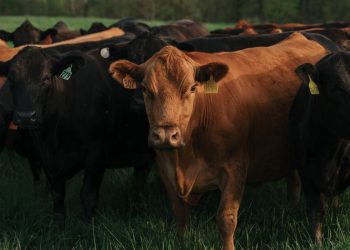Last week I went to Adelaide to see a man about a tree. The man was Dr Dean Nicolle and the tree was actually 10,000 eucalypt trees and mallees, of over 800 species, which Dean has been planting on a block of land south of Adelaide since 1993.
Dean’s passion for eucalypts is incredible. It makes me realise that so much conservation happens purely because someone is just absolutely captivated by something. And thank goodness Dean is, because his love for the eucalypt made the Currency Creek Arboretum, which is designed to bring together all of Australia’s eucalypt species in one place for research.
During my visit, I’m taken aback by the beige-brown landscape, and how the grass crunches like cornflakes underfoot. South Australia is in the grip of its worst drought in 40 years. Dean is conducting drought studies on his trees, about a third of which are dying, or have curled up and died in the last few months. He says he’s noticed the drought has particularly affected the stringybarks in the Adelaide Hills.
As a communications professional working in climate media for years, I am used to reading terrible climate news but this hits different. There is something about seeing trees dry out and turn brown, with bark splitting and leaves desiccating, that makes my insides knot.
I feel like there’s a warning implanted deep in my subconscious from way, way back that says: if the trees can’t survive, neither can you.
Of course, eucalypts are historically a great survival story. Known generally as hardy and drought-resistant, Australia’s iconic eucalypts have weathered ice ages and count their lineage from 52m years ago, when Australia was still part of Gondwanaland. There’s also evidence that they’ve survived bushfires for millions of years.
Can they survive us? As burning Australia’s coal and gas fuels more severe and frequent bushfires, heatwaves and droughts (on top of land clearing, deforestation and disease), our trees are finding their limits.
The International Union for the Conservation of Nature (IUCN) has warned that 25% of eucalypts are at risk of extinction, with more added to their Red List of threatened species in 2019.
With about 840 species, eucalypts are highly diverse but many species only have a small distribution and are highly adapted to that particular area. This can make them particularly susceptible to localised climate impacts. If only trees could uproot themselves and walk to a more favourable location and climate.
Take Tasmania’s stunning tall forests, for example, home to Eucalyptus regnans, the tallest flowering tree in the world. They grow to their impressive height because they have adapted to cool summers and high rainfall. This means they have little wriggle room and a changing climate, with more droughts and heatwaves, is causing dieback. The increased frequency and intensity of bushfires has also seen 60% of Tasmania’s largest known eucalypts killed by fires since 2004.
Over lunch after the Currency Creek Arboretum visit, Dean, his partner Annett and I chat about how we cope with “solastalgia” (or eco-anxiety) and watching extinctions in real time.
Dean says he is trying to view the death of trees he’s nurtured for decades through a research lens. Annett, also a scientist, enjoys kickboxing to cope with these big feelings. I say I find swearing helpful.
More useful than swearing, however, is the work being done to protect vulnerable populations, and invest in adaptation and research such as the Nardoo climate-ready revegetation project.
Meanwhile, I will try to do my little bit to foster a love of eucalypts through art and comics. During the long drive back from Adelaide to Sydney, as the landscape turns from brown to green again, I keep looking at the bag of gumnuts Dean gave me to draw. They are like wondrous jewels. I want everyone to know and love them so they can have a safe future.
#Ive #Australias #beloved #gumtrees #dying #survive #Jess #Harwood






















